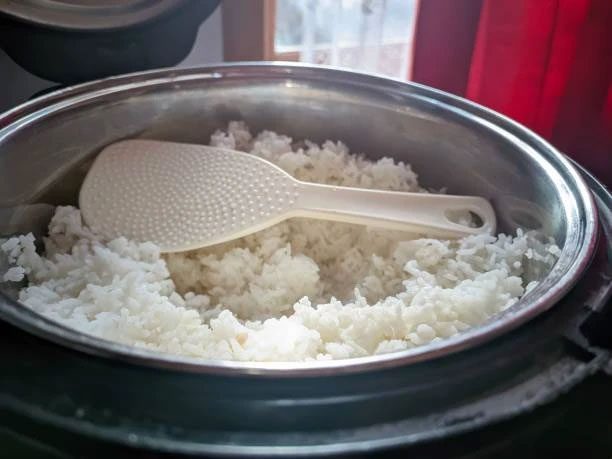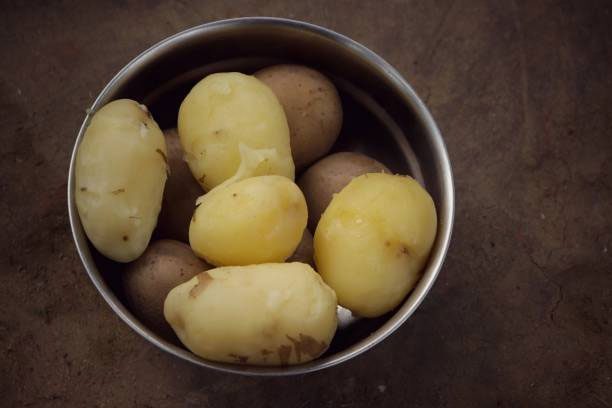Resistant starch is highly beneficial for health, and you can increase the amount of resistant starch in foods such as pasta, potatoes, and rice by cooking and then cooling them.
“Rice, pasta, and potatoes that are cooled and stored in the refrigerator overnight are better for health,” this sounds like a tip popularized on the Internet. So, what do experts say about this?

Cooled rice transforms into resistant starch, which is healthier. (Photo: iStock).
According to nutrition experts, there is a type of starch that is very healthy for the body called resistant starch, which acts like fiber but differs from fiber in that it passes through part or all of the digestive system.
Starch transforms into resistant starch when it is cooled, meaning that after food is cooked and then cooled. Resistant starch helps reduce blood sugar levels and limits the risk of certain intestinal diseases and cancers.
Balazs Bajka, a physiologist at King’s College London, shared: “You can change the properties of certain foods to make them healthier by cooking and cooling them.”
Resistant starch is a type of fiber found in many foods (whole grains, legumes, nuts, seeds, green bananas…).

Resistant starch in cooled pasta is not easily digested, so it does not raise blood sugar levels as much as regular starch. (Photo: The New York Times)
Additionally, this nutrient can be found in foods containing regular starch such as rice, pasta, and potatoes after they have been cooked and cooled.
Dr. Bajka noted that cooking and cooling cause starch molecules to become tighter and bond together, making them harder to digest as they pass through the stomach and small intestine. When this happens, sugar molecules are not easily broken down and absorbed into the bloodstream as they normally would be.
Kimberley Rose-Francis, a nutritionist in Florida who specializes in working with diabetes patients, stated that because resistant starch is not easily digested, it does not raise blood sugar levels as much as regular starch.
Instead, resistant starch enters the large intestine and is fermented by gut bacteria, providing beneficial bacteria for digestion, helping to lower cholesterol, reduce inflammation, and improve gut health.
Annette M Goldberg, a nutritionist at the Dana-Farber Cancer Institute in Boston, shared that there is some previous evidence suggesting that resistant starch plays a role in reducing the risk of certain cancers; however, further research is needed.
In a trial involving over 900 people with Lynch syndrome (a hereditary condition that increases the risk of developing multiple types of cancer), researchers divided participants into two groups: one group consumed 30 grams of resistant starch supplements daily for four years, while the other received a placebo.
Up to 20 years later, scholars found that although there was no change in the risk of colon cancer, among those who were supplemented with resistant starch, the risk of other types of cancer was only half that of those taking the placebo.

Cooking and cooling starchy foods effectively increases fiber content. (Photo: iStock).
Mindy Patterson, a Professor of Nutrition and Food Science at Texas Woman’s University, stated that cooking and cooling starchy foods effectively increases fiber content.
Fiber has many health benefits, such as reducing the risk of heart disease, type 2 diabetes, and certain types of cancer.
“When consumed in the form of resistant starch, it seems to cause fewer uncomfortable effects such as bloating or gas compared to other forms of fiber,” Dr. Patterson noted.
Dr. Patterson mentioned that consuming more fiber, whether in the form of resistant starch or regular starch, is beneficial for everyone.
Good sources of fiber include whole grains, fruits, vegetables, and legumes. In addition to eating foods that naturally contain resistant starch, you can increase the resistant starch content in foods like pasta, potatoes, and rice by cooking and cooling them.
Patterson indicated that this diet is especially suitable for those with prediabetes or type 2 diabetes.
Rose-Francis has encouraged many diabetes patients to try cooking and cooling rice, pasta, or potatoes to see if there are any improvements in their blood sugar levels.
“For them, this could be an effective method,” she explained, “because many people with diabetes have to limit their intake of starchy foods due to concerns about their blood sugar levels rising too high.”


















































